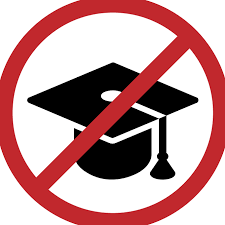Different Levels of Understanding and How They Affect Learning

Every journey begins somewhere, and for the journey of learning, it commences with developing an understanding of the material and content at hand.
Understanding is a premise of learning, with different stages of comprehension having a profound impact on the learning process. Whether you're a teacher, student, researcher, or an individual simply seeking to expand your knowledge horizon, gaining awareness about how these levels influence learning can be highly beneficial.
At the outset, let’s lay a foundation by understanding the concept of 'learning'. Learning is a process where an individual's skills, behavior, knowledge, or values are altered as a result of experience, instruction, or study. The comprehension of these learned values, skills, or behaviors varies depending on the individual's level of understanding.
Lopez and Weatherly (2012) proposed three primary levels of understanding: surface understanding, deep understanding, and transfer understanding. Surface understanding refers to the basic level where one can recall or remember the facts and figures. Deep understanding allows individuals to conceptualize ideas, apply principles, and analyze situations, while transfer understanding equips one with the ability to use this knowledge in various contexts.
A surface level of understanding is the primary step in learning, where facts are memorized and basic information is stored. Here, learners recognize the key points or obvious facts, but may not fully comprehend the underlying meaning or principles. In educational settings, surface understanding often equates to rote learning, which although is essential in the primary stages, should not be the sole mode of learning.
Advancing to the second stage, deep understanding expands an individual's knowledge beyond mere learning. It allows a learner to explore connections, make interpretations, and draw inferences, thereby facilitating the ability to fully comprehend the subject matter. This level of understanding is crucial for developing critical-thinking and problem-solving skills.
The pinnacle of understanding is the transfer level, where learners can apply their knowledge and skills to new situations and contexts. Not only can they recall facts, understand the complex principles, but they can also creatively use this knowledge aptly. This level serves as the backbone in real-world problem solving and creative thinking.
So, how do these different levels of understanding affect learning? A synthesis of learning psychology reveals that learning and comprehension are deeply intertwined. In fact, the depth of comprehension at each level significantly governs the quality of learning an individual experiences.
With a surface level of understanding, learning tends to be superficial. Here, facts learned are likely to be forgotten if not repeatedly reviewed. Contrary to this, a deep level of understanding produces a rich learning experience, fostering analysis, critical thinking, and the ability to draw parallels or connections between different concepts.
The ability to transfer understanding to new scenarios, in turn, is a clear indicator of successful learning. This illustrates an individual's capacity to use their knowledge beyond the confines of academic learning, creating a meaningful connection between learned material and their day-to-day lives.
Let's go a bit deeper into how these different stages of comprehension can potentially impact classrooms. A student with a surface level of understanding may find it challenging to interpret assignments, concepts or follow instructions which elicit a deeper level of comprehension. As a result, they may exhibit rote learning rather than conscious comprehension.
On the contrary, a student with deep understanding digs beneath the surface of the text or information, assimilating a broader meaning or relevance. They're capable of drawing connections between different concepts, effectively expanding their understanding beyond the classroom's lessons.
When students reach the level of transfer understanding, they become capable of connecting what they learn in school to the world outside. They can apply what they have learned to new situations, and respond creatively and effectively to new problems or concepts. It's at this stage that learning becomes fully effective.
This understanding is not just beneficial for students, but also for teachers. By recognizing the different levels of understanding among their students, teachers can tailor their teaching strategies accordingly, ensuring that every student attains the maximum benefit from each lesson.
Researchers too can take advantage of understanding these comprehension stages. They can use it to design more effective learning materials and strategies, develop methods to measure student comprehension, or analyze the effects of different teaching methodologies on student understanding.
Even for individuals, understanding these stages can help them enhance their self-learning strategies. They can identify when they are merely memorizing information versus truly understanding it, and adjust their learning style accordingly.
The stages of comprehension are also essential tools for the government and non-government organizations focused on learning and education. Knowledge about these stages can help in formulating policies, designing educational programs, and setting benchmarks for educational outcomes.
Understanding these levels is not enough. What matters is the application. Students, teachers, and anyone interested in learning should consciously strive to reach the deeper levels of understanding.
Incorporating questioning, discussion, debate, and intensive reading can foster deep understanding. Simultaneously, learning through real-life situations, problem-solving exercises, and case studies can facilitate transfer understanding.
But remember, this process doesn’t happen overnight. Moving from surface understanding to deep, and reaching the transfer stage is a gradual process. It's about continually striving to improve, and having the patience, persistence, and willingness to learn.
In conclusion, understanding the "Different Levels of Understanding and How They Affect Learning" provides a broader perspective about the relationship between learning and comprehension, guides on how to optimize the learning process, and enhances the educational experiences for learners of all ages and stages. Bearing these levels of understanding in mind could lead us towards the destination of optimal learning, where we turn information into knowledge, and knowledge into wisdom.
Check This Out!
|
| |
|
| |
|
|











